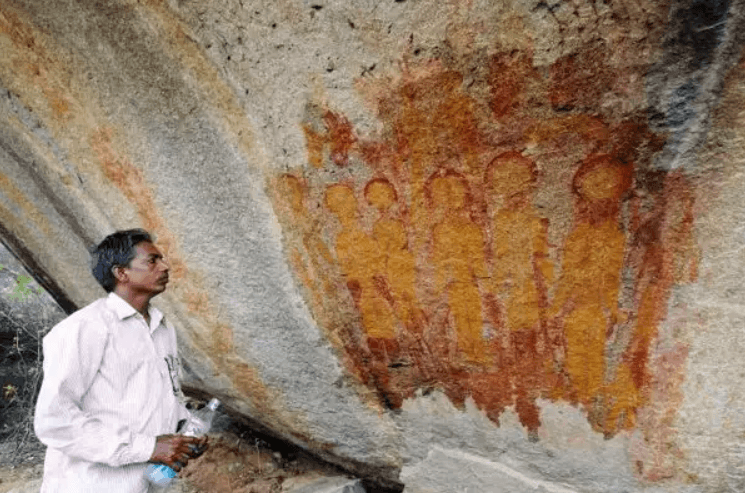In the dense forests of Chhattisgarh, India, a remarkable discovery has captured the attention of archaeologists and historians alike. A series of ancient rock paintings dating back approximately 10,000 years depict figures that appear, intriguingly, to resemble modern-day depictions of extraterrestrials and unidentified flying objects (UFOs).
Found in the tribal Bastar region, these rock paintings feature humanoid figures with elongated bodies, large, bulbous heads, and expressions that might remind viewers of the stereotypical image of an alien. Some illustrations even appear to show disc-like objects that resemble the classic "flying saucer" shape seen in popular media and UFO lore.
The unusual features of these paintings have led some archaeologists to speculate about what might have inspired them. The local villagers hold their own explanations, rooted in tribal folklore passed down through generations. They refer to ancient stories about "rohela people"—small, mysterious beings who came from the sky and whisked people away, only for them to return shortly after. This legend, according to the locals, bears a striking resemblance to contemporary narratives of alien abductions.
J.R. Bhagat, an archaeologist from the state’s archaeology department, has studied these intriguing rock paintings in depth. He notes that while it’s challenging to definitively link the artwork to extraterrestrial life, the imagery does seem unlike anything typically seen in ancient rock art. Bhagat acknowledges that the resemblance to aliens and UFOs might be coincidental, but the suggestion of an otherworldly connection continues to intrigue both scientists and the public.
Chhattisgarh's government is now considering consulting national and international space agencies, including the Indian Space Research Organization (ISRO) and NASA, to help decipher the mystery behind these figures. The experts hope to gain insights into whether these paintings might symbolize ancient people's experiences or imaginations of celestial events, which they could have interpreted in visual forms.
While the debate about ancient alien contact remains contentious within the scientific community, the discovery of these paintings adds a new layer to the global intrigue surrounding prehistoric encounters with "otherworldly" beings. Researchers believe that studying these images might shed light not only on early human creativity but also on how ancient cultures possibly conceptualized the cosmos.
For now, the paintings in Chhattisgarh remain an enigmatic artifact—a portal into the lives, imaginations, and beliefs of people who lived thousands of years ago. Whether inspired by real encounters or merely by myth, these images remain a testament to humanity’s age-old curiosity about the unknown.








